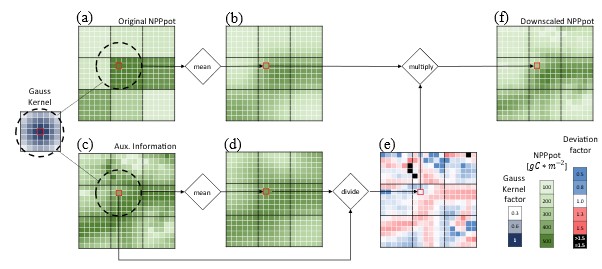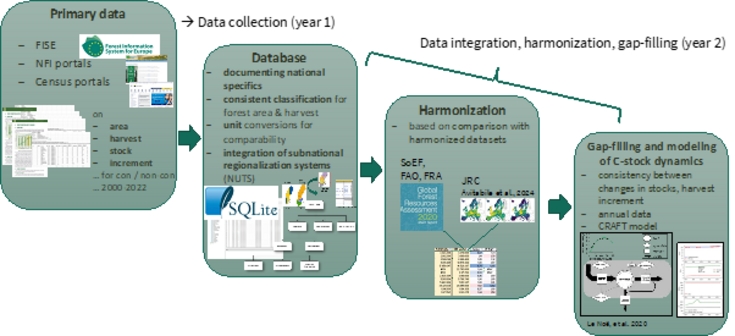Assessing the Intensity of Forest Use in Europe using spatio-temporal analysis
SUPERVISOR: Karlheinz ERB
PROJECT ASSIGNED TO: Florian WEIDINGER
Forests have always been vital to human society, providing essential resources, ecosystem services, and cultural value. Today, their importance is even more pronounced as they are central to addressing the growing ecological crises. Forests serve as biodiversity refuges, carbon sinks that mitigate climate change, renewable resource providers (e.g., bioenergy), and spaces for human recreation. For example, the European Green New Deal, which aims to achieve net-zero greenhouse gas emissions by 2050, heavily relies on sustainable forest resources to develop a bioeconomy. However, many European forests are already under significant stress from rapidly changing environmental conditions. These include more frequent and severe extreme weather events like heat waves and storms, increasing incidences of wildfires, air pollution, pests such as bark beetles, and diseases like fungal ash dieback.
To ensure forests can continue to fulfill their ecological and societal roles in the face of these challenges, it is critical to assess and manage their use intensity systematically. A robust analysis can help identify the potential for climate change adaptation and mitigation while also preventing overexploitation. However, the concept of forest use intensity is complex and multidimensional, requiring more than just an evaluation of annual harvests. It involves understanding human and natural influences, the environmental conditions under which forests grow, and the long-term impacts of forest management practices.
Determining the intensity of forest use in Europe is fraught with several challenges. Firstly, ground-based forest data, primarily derived from National Forest Inventories (NFIs), is inconsistent and difficult to harmonize. Each country uses its own definitions and methodologies, such as variations in the calculation of stem volume, which complicates cross-border analyses. Additionally, much of this data is not machine-readable and is available only in local languages, further complicating its accessibility for researchers.
Secondly, there is a significant lack of robust data on potential natural vegetation, or net primary productivity in the absence of human influence (NPPpot), at a high enough resolution. Current models and datasets operate at very coarse scales (e.g., 50x50 km), which are insufficient for understanding the fine-grained spatial and temporal variations in forest use practices. The limitations of these coarse resolutions undermine the ability to assess forest management systems, which often operate on small spatial scales and over long rotation cycles.
Lastly, there is a conceptual gap in defining suitable indicators for forest use intensity that go beyond simple metrics like harvest volumes per unit area. While such metrics provide a starting point, they fail to account for important factors like differences in forest growth conditions, the legacy of land use, and the distinction between human and natural influences. Advanced indicators, such as those that consider tree species composition, deadwood, and potential vegetation states, require significant data inputs and are currently limited in their applicability across large regions.
To address these challenges, my doctoral project focuses on:
- Developing high-resolution NPPpot maps using dynamic global vegetation models with low computational requirements (Figure 1).
- Creating a European forest database with sub-national resolution and annual data (2000–2020) (Figure 2).
- Establishing a comprehensive framework of indicators to quantify forest use intensity.
- Conducting spatiotemporal analyses of forest use intensity in Europe.

Figure 1 Schematic flowchart for downscaling potential net primary productivity (NPPpot) with a smoth auxuliary data approoach.

Figure 2 Workflow of collection, harmonization and modelling of a consistent European forest database, as part of the ForestNavigator project.
The project builds on interdisciplinary approaches of the Vienna School of Social Ecology, emphasizing society-nature interactions and sustainability challenges. The concept of "colonization" frames forests as socio-ecological systems, integrating natural and human processes. Existing methodologies like the HANPP framework will complement this research.
By addressing data harmonization, enhancing resolution, and developing systematic indicators, this research will advance the understanding of forest use intensity in Europe. The outcomes will inform sustainable forest management practices, balancing ecological, economic, and societal needs.
